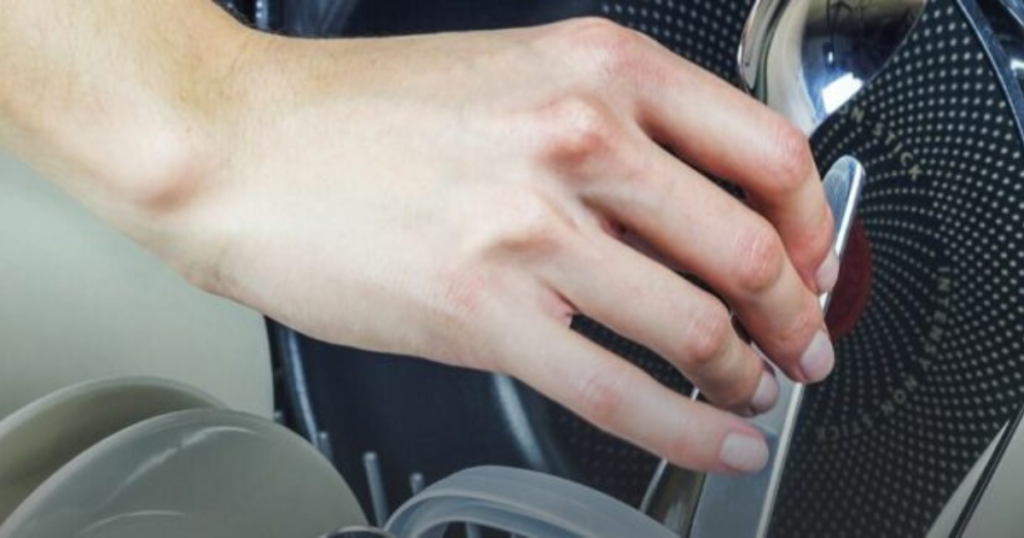When you’re in a rush or just want to get your dishwashing done quickly, it’s tempting to toss your dirty plates, cups, and utensils straight into the dishwasher. After all, isn’t that what dishwashers are for? While it’s true that modern dishwashers are powerful cleaning machines, preparing your dishware before loading it can help ensure they come out sparkling clean and your appliance works efficiently for years. Let’s explore what steps you should take before putting your dishware in the dishwasher.
Scrape Off Excess Food
One of the simplest yet most important things to do before loading your dishwasher is to scrape off excess food. Leaving large chunks of food on your plates or bowls can clog your dishwasher’s drain and filter, affecting its performance. Most dishwashers are designed to handle small particles of food, but large pieces of food, like a leftover steak or mashed potatoes, can block water flow or create unpleasant smells.
Use a spoon, fork, or even a spatula to remove bits of food from your dishware. You don’t need to rinse every plate thoroughly—just make sure there aren’t any big pieces of food clinging to them. This small habit will save your dishwasher from unnecessary wear and tear, keeping it in top shape for longer.
Rinse Off Stubborn Residue (When Needed)
While dishwashers are excellent at cleaning, they can struggle with certain types of food residue that dry onto plates, like egg yolk, cheese, or oatmeal. If you’ve had breakfast or a meal with sticky or dried-on food, it’s a good idea to rinse off the dishware before loading it into the dishwasher.
Run the dishes under some warm water or give them a light scrub with a sponge to remove the hardened food. This step ensures that your dishes will come out completely clean, rather than with food residue baked on during the wash cycle.
However, if you’re using a high-performance dishwasher with a heavy-duty wash cycle, you might be able to skip this step for most items, but it’s still a good practice to give particularly tough residues a quick rinse.
Check For Non-Dishwasher-Safe Items
Before loading your dishwasher, it’s important to ensure that every item you’re about to wash is dishwasher-safe. Certain types of dishware and cookware can be damaged in the dishwasher, including:
- Wooden items (spoons, cutting boards)
- Cast iron cookware
- Copper or brass pots
- Delicate china or crystal
These materials can warp, crack, or lose their finish in the high heat and powerful jets of a dishwasher. Always check the manufacturer’s recommendations for your dishes and utensils to avoid damage. Items like plastic containers should also be labeled “dishwasher-safe” before placing them in the machine, and it’s best to put them on the top rack to avoid melting or warping.
Organize Your Dishware Properly
The way you load your dishwasher matters a lot. Simply tossing dishes haphazardly into the machine won’t guarantee a thorough clean. To maximize the dishwasher’s effectiveness, you should take a little extra time to arrange the dishes in an organized way:
- Plates: Place them in the lower rack with the dirty side facing the center.
- Bowls: Put bowls in the top rack, tilted downwards so water can reach the inside.
- Cups and Glasses: These should also go on the top rack, ideally between tines, to prevent them from clanking into each other during the wash cycle.
- Utensils: Place forks, spoons, and knives in the designated utensil holder. For the best results, alternate between heads up and heads down, which prevents the items from nesting together and ensures water reaches all sides.
By taking a little extra care to place your dishware properly, you’ll help ensure that everything is cleaned thoroughly and avoid potential damage during the wash cycle.
Remove Sticky Labels Or Price Tags
If you’ve ever bought new glassware, plates, or utensils, you know how manufacturers like to attach sticky labels to them. Before loading any new dishware into the dishwasher, it’s important to remove these labels completely.
Why? Because if you leave labels on, the heat and water in the dishwasher can cause the adhesive to soften and spread, leaving a sticky mess on your dishes. Removing these labels manually is a lot easier than trying to scrub them off later. Use a sponge, a bit of soap, and some warm water to peel off any labels or price tags before washing.
Don’t Overload The Dishwasher
One common mistake people make is overloading the dishwasher to avoid doing multiple loads. While it’s tempting to try and fit everything into one wash cycle, this can lead to poor cleaning results. Overcrowding the dishwasher blocks the water jets from reaching all surfaces of your dishware, meaning some items may come out dirty.
Instead of cramming everything in, leave enough space between each item for water and detergent to circulate properly. If necessary, run an extra load to ensure all your dishes are cleaned thoroughly.
Check The Dishwasher Filter Regularly
While this isn’t a step you need to do every time you run the dishwasher, it’s important to check and clean the dishwasher filter regularly. The filter is responsible for trapping food particles and preventing them from being re-circulated during the wash cycle.
A clogged or dirty filter can lead to poor cleaning performance and even unpleasant odors. To avoid this, remove the filter and clean it with warm water and a soft brush once a month. This will help keep your dishwasher running efficiently and ensure your dishes come out sparkling clean.
Conclusion
A dishwasher can be a lifesaver in the kitchen, but it’s important to take a few small steps to prepare your dishware before washing. Scraping off food, rinsing stubborn residues, and loading dishes properly can make a huge difference in how clean your dishes come out. Additionally, removing labels and ensuring items are dishwasher-safe can help prevent damage to both your dishware and your appliance.






